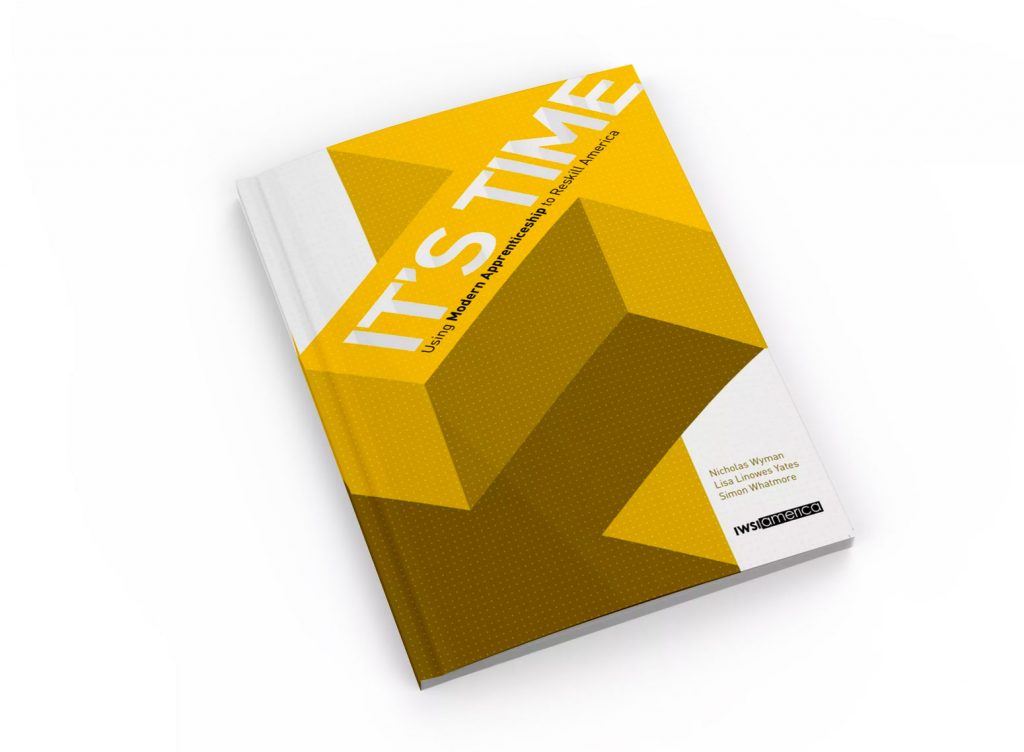
Oddly enough, in the midst of record expansion, low unemployment, tightening labor markets and record profit share and stock market prices, the U.S. is facing a fundamental challenge to its economic prosperity. Employers are coming up short with the skills they need to be fully competitive, productive and meet long–term goals. Employers are having difficulty filling new jobs with qualified people who have both relevant skills and workplace experience. Many communities cannot attract or retain businesses because of a mismatch between the skills employers need and skills locals have.
The traditional approaches used to cultivate talent, in either school or on the job, are out of sync with evolving employer needs. The rapidly changing nature of work is requiring businesses to reevaluate and become more creative about their recruitment, hiring, and talent development strategies. People need to rethink their post-secondary and school-to-work options. Whether someone has a high school diploma or college degree, the school-to-work transition has become extremely challenging for many. School, alone, often does not prepare individuals for today’s workplace. It’s time to embrace a modern approach to workforce development, that can nurture a person’s calling, equip them with both the technical and interpersonal skills employers need today and prepare them for lifelong learning and success. In turn, we strengthen businesses, strengthen local and regional communities and strengthen our economy.
One Solution: Modern Apprenticeships
A new report It’s Time. Using Modern Apprenticeship to Reskill America highlights the vital role of Modern Apprenticeship. And demonstrates its role as a a work-based training program designed to prepare individuals of any age with the skills businesses need to set them on a clear pathway to employment and long-term career success.

Modern Apprenticeships are available in a broad range of 21st-century industries and occupations from cybersecurity, healthcare, and data analytics to hospitality management, green sciences, engineering and advanced manufacturing. In those fields, the level of skills ranges greatly from mid-level to high, depending on the occupation.
Small-, medium- and large-size companies are using Modern Apprenticeship to ramp up their workforce. Examples of companies now investing in Modern Apprenticeship include LinkedIn, Lockheed Martin, JPMorgan Chase, Amazon and Mailchimp.
Key components of Modern Apprenticeships include:
• customized classroom and on-the-job training at reduced or no cost,
• opportunity to earn while learning and working,
• nationally recognized industry credentials or specialized certification for registered programs,
• potential college credit leading to an associate or bachelor’s degree.

Modern Apprenticeships are flexible and can follow a variety of career trajectories, whether someone is a recent high school graduate, college graduate, military veteran or mid-career adult.
These modern programs require an initial investment of time and money, but lead to a substantial return on investment in areas such as improving companies’ overall performance;
earning while learning; increasing employee loyalty, engagement and productivity, reducing turnover; and diversifying the workplace.
Most apprentices earn while they learn, and move directly into employment upon program completion, much of the time free of student debt.
The time is now
The momentum for Modern Apprenticeships is building and the time is right for all industries and sectors to seize the opportunity to grow their business, diversity their workforce and establish a workplace with high-quality talent. State and local government should consider how policies, systems and investments can best support the development of their workforce pipeline to ensure a bright future for individuals, communities and the local economy. Hundreds of millions of dollars are available to private sector employers, local and state governments and nonprofits to initiate or ramp up Modern Apprenticeships.

